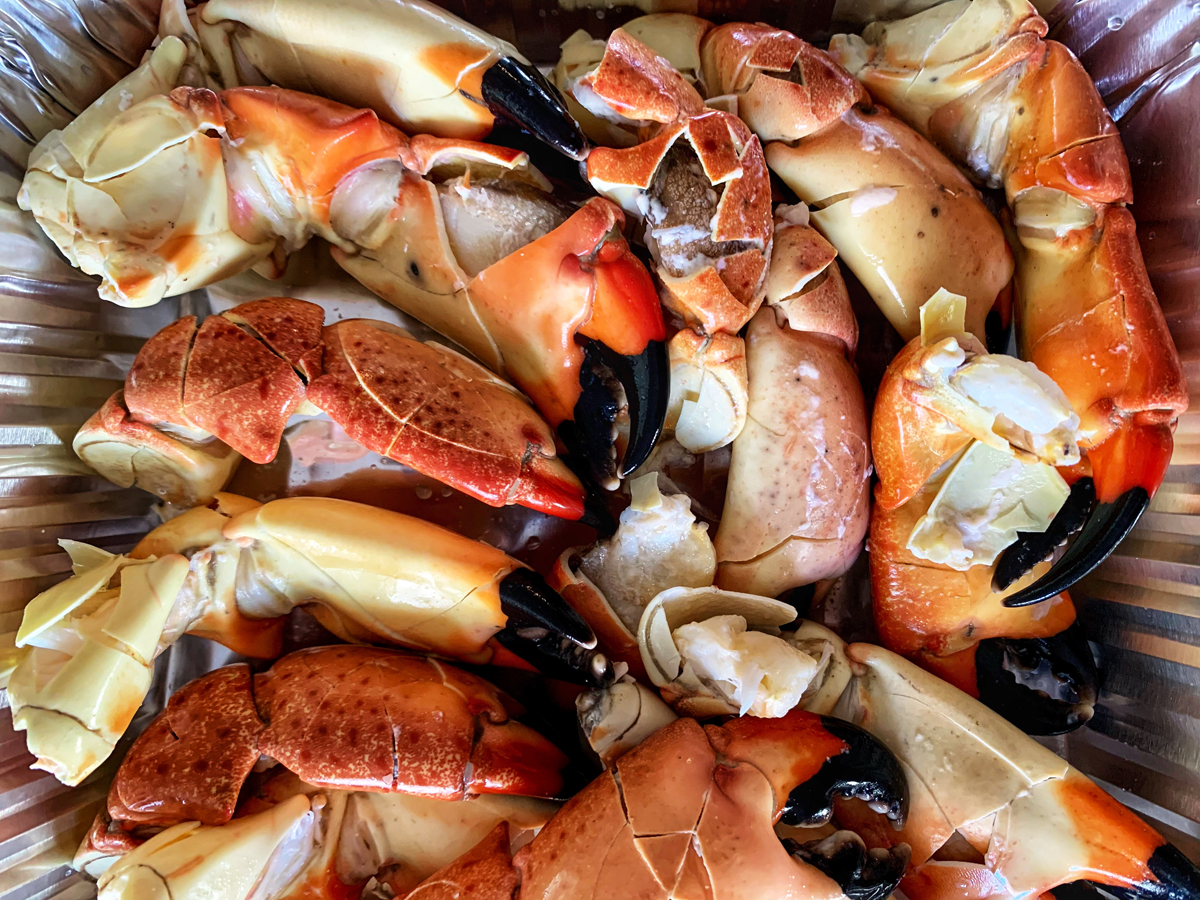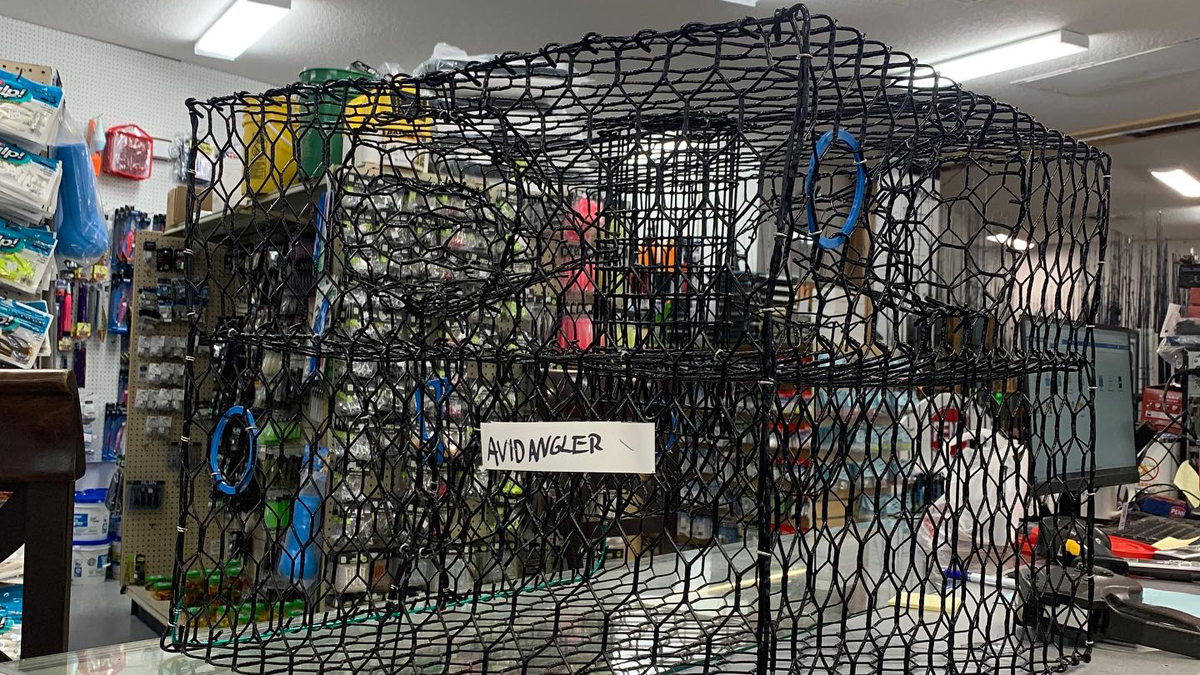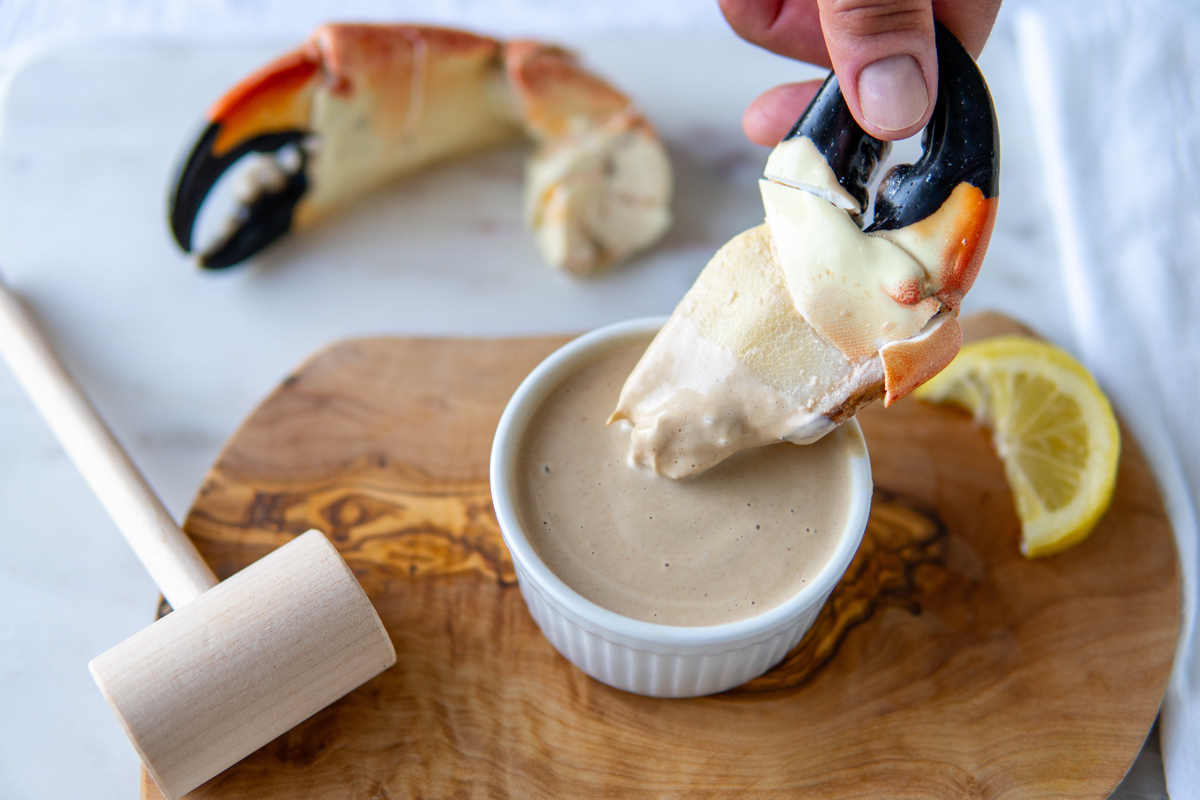Last Updated on November 12, 2025 by Eric Bonneman
St. Augustine sits between the Tolomato and Matanzas rivers, a maze of marsh creeks, oyster bars, and tide‑swept channels that grow blue crabs year round and offer a fall and winter shot at stone crab claws. Use this guide to plan legal, productive, and safe trips from shore, dock, kayak, or small boat.
(Accurate as of 11/12/2025)
The Water You Are Fishing
The Tolomato and Matanzas rivers form the local Intracoastal Waterway. They feed countless side creeks, grass edges, and oyster bars where scent carries on moving tides. Salt Run, the protected lagoon along Anastasia State Park, is a convenient place to learn the basics and to keep sets out of heavy traffic.

Crab Species You Will Encounter
Blue crab is the everyday target. They respond quickly to fresh, oily bait, and you will find them from dock pilings and grasslines to deeper bends and channel edges. There is no minimum size for recreational harvest in Florida, and egg‑bearing females must be released.
Stone crab is a seasonal opportunity focused on rock and hard bottom. Only the claws are harvested and the crab is returned alive. The open season runs October 15 through May 1, and the minimum claw size is 2 7/8 inches.

Seasons and Movement
Blue crabs are available year round. Expect more shallow‑edge activity in warm months and a slide to deeper holes and channels during cold snaps. Females migrate toward lower estuary and inlet zones to spawn, while males often hold farther upriver. That pattern helps you decide whether to set closer to the inlet or higher in the system.
Stone crabs are a fall and winter plan. Target rocky structure, jetty edges, and other hard bottom during the open season.
Regulations at a Glance
- License and registration: A Florida saltwater fishing license is required to take crabs unless exempt. Anyone 16 or older who uses blue or stone crab traps must complete the free recreational trap registration and mark each trap and buoy with the issued number plus name and address.
- Blue crab limits and gear: Daily bag up to 10 gallons whole per person. No size limit. Legal gear includes up to 5 traps per person, dip or landing nets, drop nets, fold‑up traps, hook and line, push scrapes, and trotlines. Crab snares are not legal. Traps must be pulled by hand in daylight, kept out of marked navigation channels, and not used more than 3 nautical miles offshore on the Atlantic side.
- Blue crab trap specs: Rigid throat opening no larger than 2 inches high by 6 inches wide, at least three 2 3/8 inch escape rings, and a degradable panel. Buoy at least 6 inches and marked with a legible letter R at least 2 inches tall. Traps and buoys must be labeled with owner information and the registration number.
- Blue crab trap closures: Short regional closures occur to clean up lost gear. On Florida’s east coast these closures fall in even‑numbered years. You may continue to harvest with non‑trap gear during those windows.
- Stone crab rules: Open October 15 to May 1. Only claws may be kept. Minimum claw length 2 7/8 inches. Daily bag 1 gallon of claws per person or 2 gallons per vessel, whichever is less. Recreational trap limit 5 per person. Traps are daylight‑only and follow similar buoy, labeling, and escape‑ring requirements, including a 2 3/16 inch escape ring in wood or plastic traps.
Where to Crab in St. Augustine
Salt Run: Sheltered water with grass banks and oyster edges. Good for ring nets and handlines from docks or shoreline access.
Tolomato River: Work creek mouths, marsh points, and shell bars outside marked channels. Vilano and Palm Valley launches put you on productive water quickly.
Matanzas River: A tide‑driven estuary with bends, bars, and feeder creeks. Avoid the main inlet’s heaviest flow and set on inside bends where traps sit upright and scent holds.
San Sebastian River and marina edges: Current breaks around docks and pilings gather crabs, especially on moving water.
Common launch points include Lighthouse Park, Vilano, Usina, and Palm Valley. Mark buoys clearly and give boaters room to pass.

How to Crab: Shore, Dock, Kayak, or Small Boat
Handlines and dip nets: Clip bait to sturdy twine with a small weight. When the line tightens, ease it up and scoop with a long‑handled net.
Drop nets and fold‑up traps: Lower beside pilings or over shell edges. Soak 10 to 20 minutes, then pull steadily.
Box traps: Set on the downcurrent side of points, along drop‑offs near oyster bars, and at creek mouths. Space traps in a line that matches wind and tide so you can check them efficiently. Always keep traps out of marked channels and pull only in daylight.
Stone crab traps: Place on or near hard bottom and jetty edges. Handle claws with care, measure before harvest, and return the crab promptly.
Bait That Produces
Use fresh, oily baits such as menhaden, mullet, fish racks, or chicken backs and necks. A bait cage or mesh bag slows bait loss to fish. Replace soggy bait regularly to keep a strong scent trail.
Tides, Timing, and Placement
Crabs feed best on moving water. Aim for the last two hours of the flood and the first two hours of the ebb. In fast current shift to inside bends and lee edges so traps sit upright and baits broadcast scent across edges, bars, and creek mouths.

Handling, Storage, and Safety
Keep live crabs cool and moist on ice with the cooler drain cracked open. Do not submerge live crabs in fresh water. Wear gloves to avoid pinches and protect small cuts. People with open wounds or compromised immunity should avoid contact with warm brackish water and handle raw seafood carefully.
Cleaning and Simple Cooking
Blue crabs are often cooked whole. Rinse briefly, then steam or boil until shells turn bright and meat firms. An ice bath afterward makes picking easier. Stone crab claws are commonly boiled, then chilled and cracked. Measure claws before harvest and keep them intact for accurate measurement. Return the crab gently to the water.

Local Etiquette and Conservation
Release all egg‑bearing blue crabs. Consider releasing large females even when legal. Space traps so other boaters can pass safely, label buoys clearly, and retrieve gear ahead of storms to prevent loss.
Quick‑Start Checklist
- Florida saltwater license and free blue or stone crab trap registration number applied to traps and buoys
- Up to 5 compliant traps per person with a 6 inch or larger buoy marked with a 2 inch R
- Bait cage and fresh oily bait such as menhaden, mullet, or chicken backs
- Long‑handled dip net, gloves, cooler with ice, and a stone crab gauge
- A simple tide plan that targets moving water and keeps traps out of marked navigation channels
Why Shop With Avid Angler
Avid Angler can outfit you with compliant traps, buoys, bait cages, fresh bait, gloves, and simple gauges. Stop in for current local intel and a setup matched to the tide and season in the Tolomato and Matanzas system. Regulations can change, so confirm details before you set gear.
